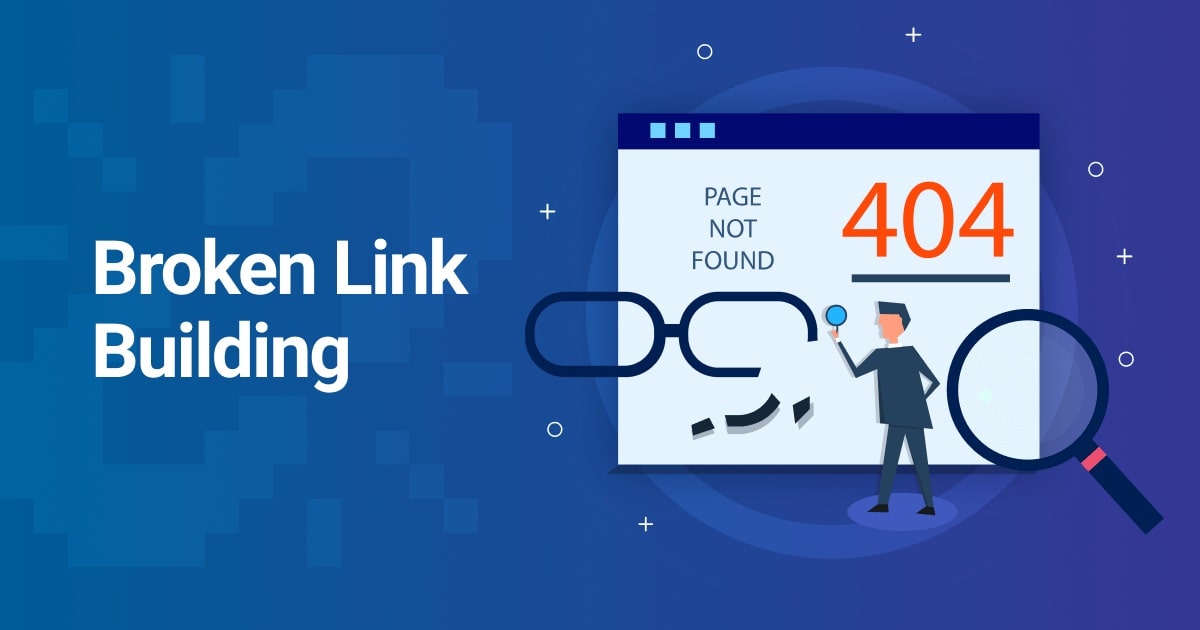Building broken links is an oft-cited link-building practice, for good reason.
It is a link-building practice with a primary focus on quality content and undoubtedly a drive to improve the internet. While these traits are attractive and have the potential to improve your SERP ranking, creating broken links can be a tedious tactic that relies heavily on uncontrollable variables.
This article will give you a comprehensive overview of what broken link building is, how to implement it, and how it compares to content marketing.
What is broken link building?
Broken link building is a technique based on the practice of finding “broken links” on websites and contacting webmasters to receive a backlink from the identified broken link. In this context, a broken link refers to any instance where a website attempts to link to another website, but the link does not exist.
This tactic is mostly used by SEO professionals with the goal of building more backlinks with relatively low effort; Plus, it’s considered a “white hat” practice, making it easy for customers to buy and not risking sanctions from Google.
Broken links occur for a variety of reasons, including:
- The destination site removed the linked web page (causing what is known as a 404 error)
- The destination site has been permanently moved or no longer exists
- A firewall, interstitial, or login is blocking access to the destination website.
- The destination site no longer exists.
- A web page was moved without adding a redirect
- The URL structure of the page receiving the link has changed
- The link was never implemented correctly in the first place
As you can see, broken links occur naturally on the Internet in many ways. The question is not just how to fix them, but how to find them.
Claim broken links from non-competitors in your industry
Compile a list of sites in your vertical that you’d like to link to. Start with a list of 30-50 sites, all of which are not in competition with each other, that appear to have high PageRank, domain authority, or whatever metric you want to use.
Run these sites through a “dead link checker” to find out if they are linking to any 404s. Some tools you can use include Broken Link Check, Dead Link Checker, or other such tools.
Create a list of web pages that contain broken links, along with the webmaster, their contact information, and the content you already have that would successfully replace the broken link.
Conduct outreach by emailing webmasters to request that your link be inserted to replace broken links.
Follow up as appropriate to ensure that you have effectively obtained the link.
Claiming broken links that previously linked to competitors
Compile a list of the top 5 sites you want to beat in the SERPs.
Use backlink audit tools to analyze broken links for each of these sites. Examples include tools like Moz’s Open Site Explorer, AHrefs, and SEMrush. You can easily extract all the backlinks to pages relevant to your content through these tools. (Note that from here on, the process is almost identical to the previous one.)
Create a list of web pages that contain broken links, along with the webmaster, their contact information, and the content you already have that would successfully replace the broken link. One difference between this and the previous method is that we recommend tracking which competitor previously owned the link.
Conduct outreach by emailing webmasters to request that your link be inserted to replace broken links. Follow up as appropriate to ensure that you have effectively obtained the link.
The path you choose may depend on the landscape of your vertical or the tools you already have access to. For example, if you already use backlink tracking tools regularly, this can be easily integrated into your process.
How to conduct broken link-building outreach
At this point, you have compiled a list of viable goals. The question is, how do you convince your targets to replace the broken link with a link to your content? There are 3 pillars to scope broken link building, and we will describe them here:
Contact discovery: The sites you are directed to do not always publish your contact information. You can search each site manually as well as use contact/email search tools
Email templates: Since you can have hundreds or potentially thousands of contacts to communicate with and share your content, it will be much more efficient to create a template.
Automated Email Services: While it’s often obvious (and off-putting to some webmasters), using email services like Buzzstream or MailChimp can speed up your process.
